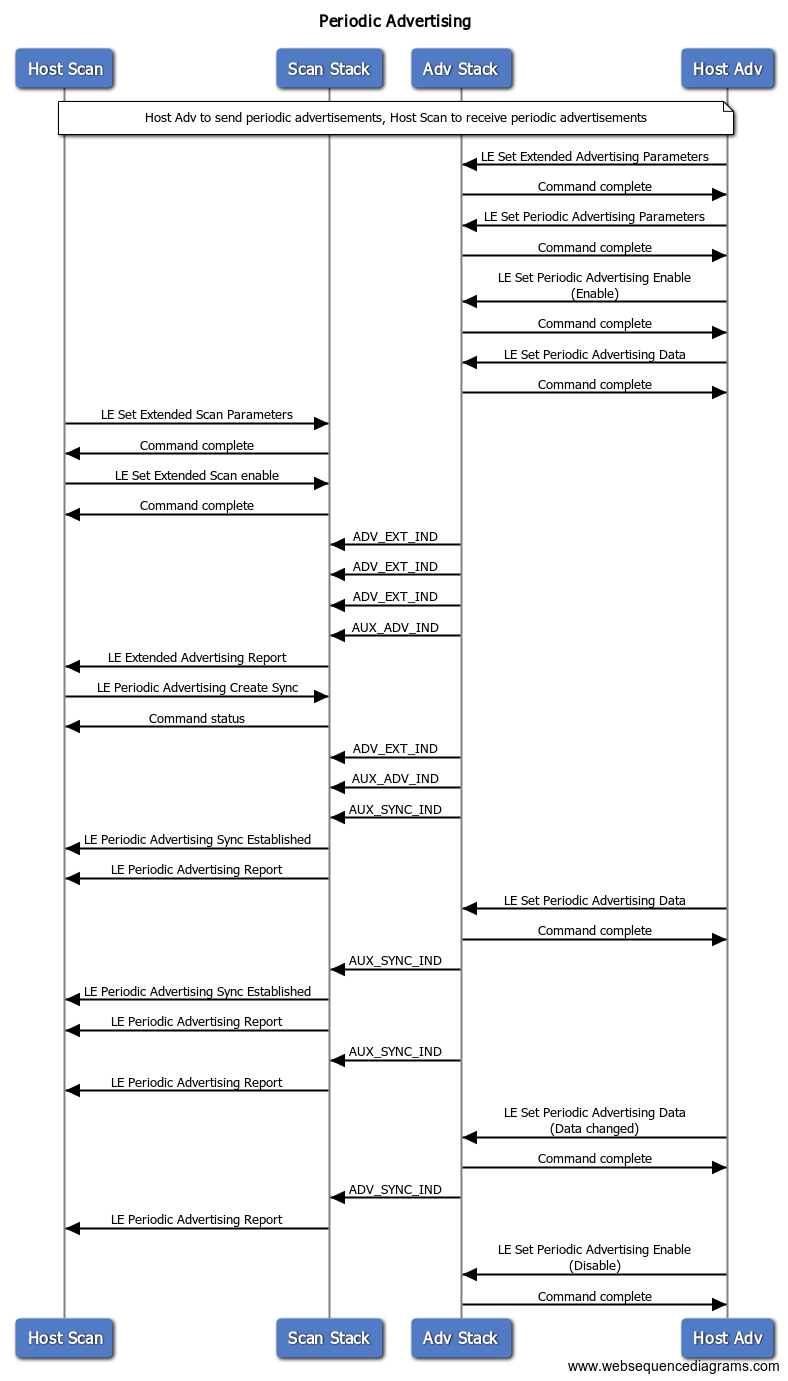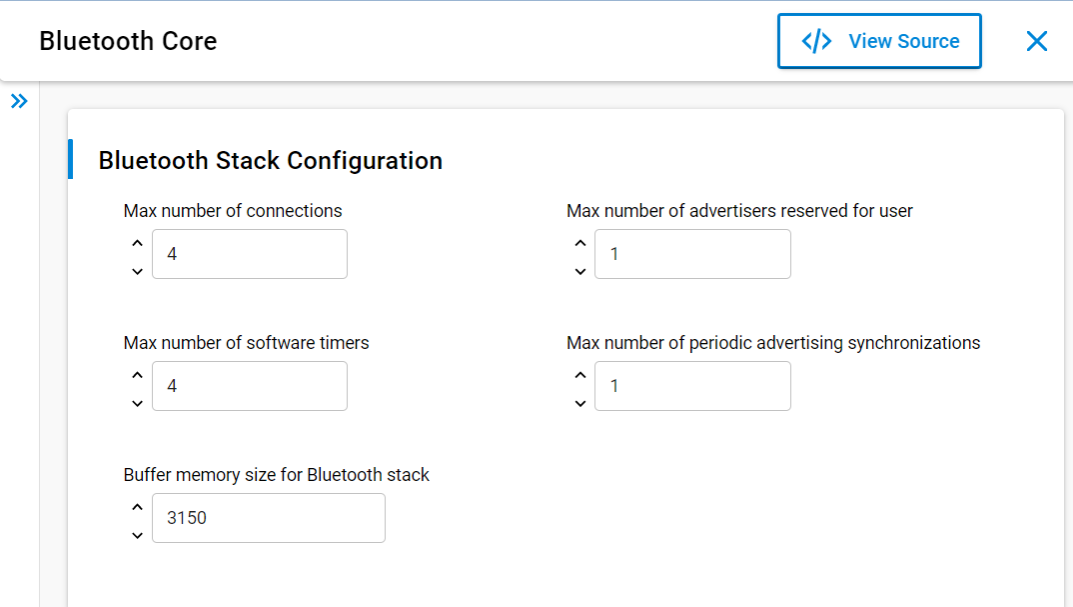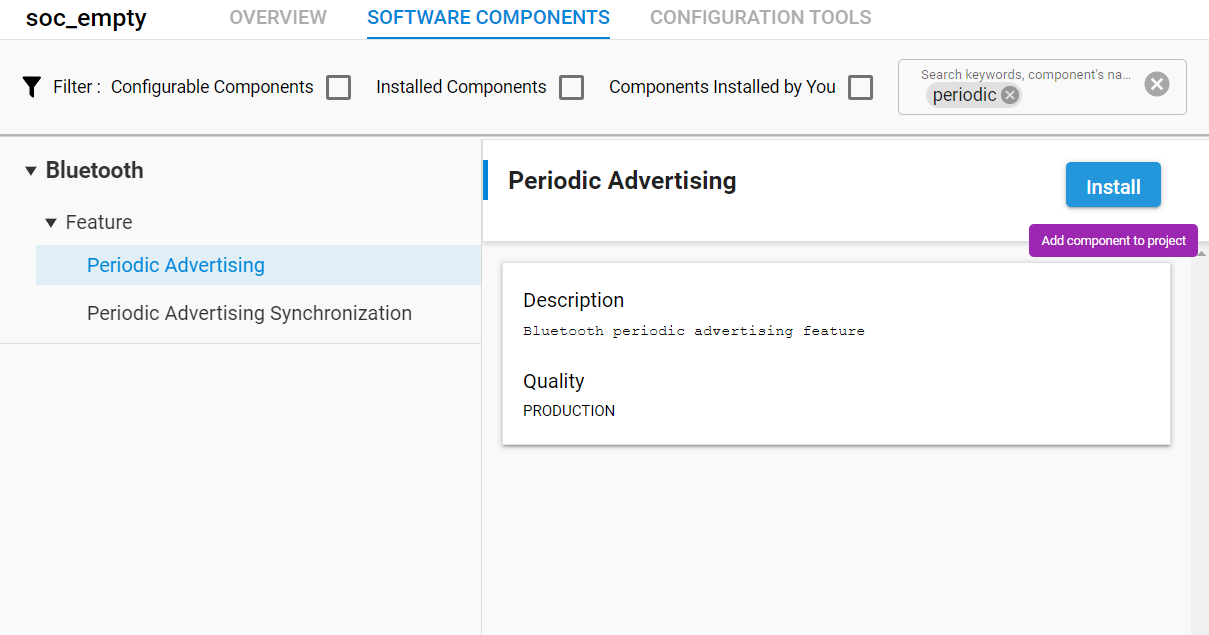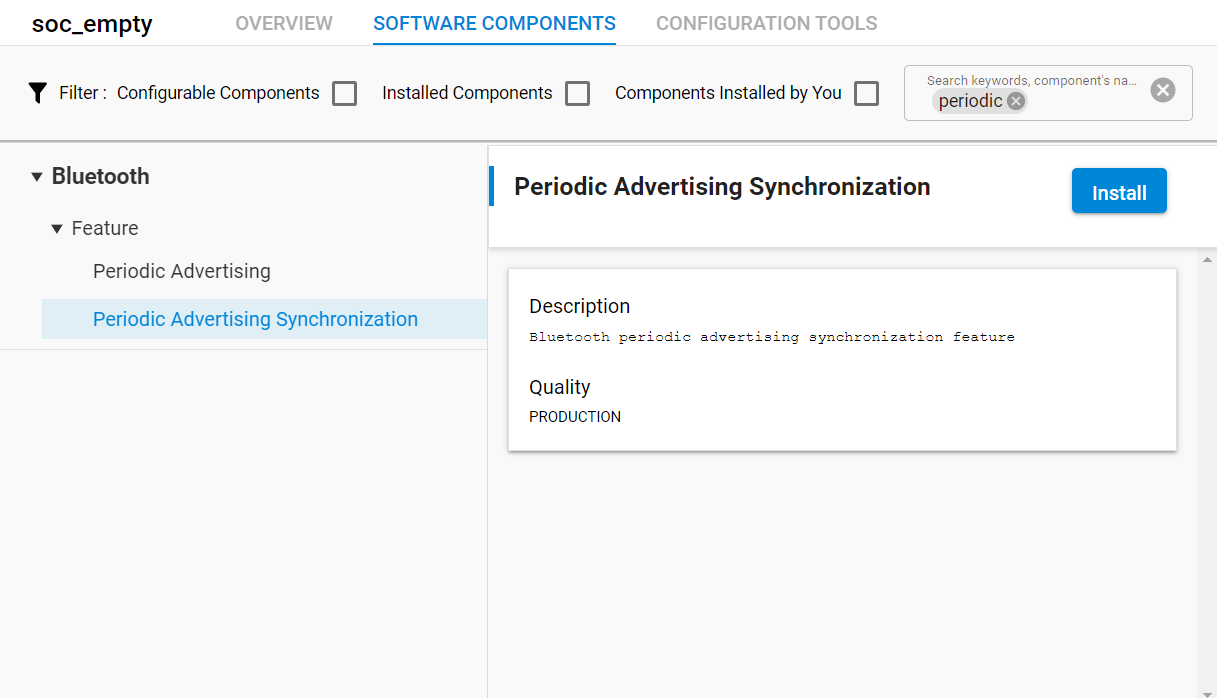Periodic Advertising#
Introduction#
Periodic advertising is a Bluetooth 5.0 feature based on extended advertisements. It allows non-connectable advertisements to be sent at a fixed interval where advertising data can change between those intervals. One or more scanners can then listen for these advertisements, which is a form of multicast. The fact that, due to the fix interval, the scanners can go to sleep between two advertisement events instead of being in receive mode all the time is a huge advantage compared to other advertising modes.
Important points about Periodic Advertising are as follows:
You do not need to enable the extended advertiser when periodic advertising is enabled. The only way to get the pointer to the Periodic Advertising train is through the SyncInfo field of the extended advertiser. As a result, starting extended advertisement is mandatory.
At least one advertisement packet needs to be sent to enable periodic advertising.
It will use the same PHY as the auxiliary packet. Each periodic advertiser has the same parameters as connection. Additionally, the channel is also determined the same way as connection using the Channel Selection Algorithm #2.
Because it is based on extended advertisements, it uses data channels as opposed to advertisements channels.
Concept#
The overall process is shown in the figure below.


Periodic advertising mode is indicated with the ADV_EXT_IND packets (legacy advertisement) sent on primary (advertising) channels, which point to AUX_ADV_IND packets (extended advertisement), containing the information about the periodic advertisement, such as interval, hopping sequence, advertiser address, and so on. The advertiser will also send AUX_SYNC_IND packets (periodic advertisement) at the identified interval containing the actual periodic advertisement data.


If the data of the periodic advertisement does not fit into one packet, the AUX_SYNC_IND packet can be followed by AUX_CHAIN_IND packets. AUX_SYNC_IND along with AUX_CHAIN_IND make up a sequence of advertisements forming a periodic advertising train.


The advertiser will periodically send new AUX_ADV_IND packets, so that new scanners can synchronize to the data stream or existing scanners can resume a lost sync. Silicon Labs' Bluetooth stack sends AUX_ADV_IND packet before every periodic advertisement so that new scanners can quickly synchronize.
Periodic Advertising Modes#
Advertiser
Advertising device is sending periodic advertisements. The device also sends extended advertisements to enable syncing on the periodic advertising at any time. This is shown in the Concept section.
Scanner
Users will get the address and SID (advertising set ID) values by scanning for extended advertisements. The device will synchronize on periodic advertising with user-specified address and SID. Synchronization will only happen when scanning is enabled. When the device has received at least one AUX_SYNC_IND packet, it is in synchronized mode. The device will then report received AUX_SYNC_IND packets. After the device has synchronized, you can stop scanning. From this point on, the device switches to receive mode only when a AUX_SYNC_IND packet is expected.
Note: Periodic advertising is a new feature, which is not yet implemented on Phones. Hence, periodic advertisement packets will not be visible in mobile platforms and in Bluetooth scanning apps.
The following diagram summarizes the procedure involving both the advertiser and scanner.


Advertiser Implementation#
Configuration#
The max_advertisers in the Bluetooth configuration structure also configures the maximum number of periodic advertisers. You can set the number of advertisers by opening the Bluetooth Core configurator tab from the Software Components:


Enabling the Feature#
You can add the periodic advertising feature from the Software components for the advertiser:


This will also initialize the feature.
Enable/Disable Periodic Advertising#
This command can be used to start periodic advertising on the given advertisement set. Note, that the set must be created beforehand with sl_bt_advertiser_create_set(). The stack will automatically start the extended advertisement containing the sync info along with the periodic advertisement.
// Enable periodic advertisement
sl_bt_advertiser_start_periodic_advertising (uint8_t handle,
uint16_t interval_min,
uint16_t interval_max,
uint32_t flags)
// Disable
sl_bt_advertiser_stop_periodic_advertising(uint8_t handle)Set Periodic Advertisement Data#
This command sets data that will be sent in periodic advertisement. Execute this command every time you want to change the periodic advertisement data. If periodic advertising is currently disabled for the specified advertising set, data is kept by the Controller and used after periodic advertising is enabled for that set. Data is discarded when the advertising set is removed.
sl_bt_advertiser_set_data (uint8_t handle,
uint8_t packet_type,
size_t adv_data_len,
const uint8_t * adv_data)The value of packet_type for Periodic advertisements is 8.
The command above can be used to set an advertisement data with a maximum length of 191 bytes. It is also possible to set long advertisement data for periodic advertisements with sl_bt_advertiser_set_long_data(). For details about the usage of this function see the following code example: Chained Advertisements.
Note: Periodic advertisement has the highest priority in the current implementation. For collisions, Periodic advertisements always overrides other advertisements. If you see collisions, try increasing the interval of advertisements.
Scanner Implementation#
Configuration#
max_periodic_sync in the Bluetooth config configures the maximum number of synchronizations the Bluetooth stack needs to support. The value can be set in the Bluetooth Core configuration, as shown below:


Enabling the Feature#
To enable Periodic Advertisement Synchronization in the Bluetooth stack, add the feature to your project, as shown below:


This will also initialize the feature.
Establish Synchronization#
This command can be used to establish a synchronization with periodic advertisement from the specified advertiser and begin receiving periodic advertisement packets. For more details, see.
sl_status_t sl_bt_sync_open (bd_addr address,
uint8_t address_type,
uint8_t adv_sid,
uint16_t * sync)The adv_sid parameter value must match the Advertising SID subfield in the ADI (Advertise Data Info) field of the received advertisement for it to be used to synchronize. It can be obtained from the event sl_bt_evt_scanner_scan_report_id.
evt->data.evt_scanner_scan_report.adv_sidThe timing parameters can be set with the command:
sl_status_t sl_bt_sync_set_parameters(uint16_t skip,
uint16_t timeout,
uint32_t flags)The skip parameter specifies the maximum number of consecutive periodic advertisement events that the receiver may skip after successfully receiving a periodic advertisement packet. The timeout parameter specifies the maximum permitted time between successful receives. If this time is exceeded, synchronization is lost.
The advertiser address_type and advertiser address parameters specify the periodic advertising device to listen to. It can be obtained from the event sl_bt_evt_scanner_scan_report_id
evt->data.evt_scanner_scan_report.address,
evt->data.evt_scanner_scan_report.address_typeThis event is the result of successful synchronization:
sl_bt_evt_sync_opened_idWhenever a periodic advertisement packet is received, this event is generated:
sl_bt_evt_sync_data_idClose Synchronization#
This command closes a synchronization with periodic advertisement or cancels an ongoing synchronization establishment procedure.
sl_bt_sync_close(uint8 sync)sync is the periodic advertisement synchronization handle.
This event is generated when the synchronization is closed, lost, or when an ongoing sync process is canceled:
sl_bt_evt_sync_closed_idExample#
This guide has a related code example, here: Periodic Advertisement Example.
